Welcome, friends. I’m Kristin: a Pacific Northwest artist, mom, & farmer offering support for seasonal, local, liturgical living. Together, we’ll explore the agrarian heritage of the Church calendar and ideas of sacred time & sacred place.
Subscribe for free to receive reflections about once a month. If you’d like to go deeper, delve into all my posts here, and access my entire library of printables, please consider joining our community!
One of the most common questions I get asked is, “How did you find your way to the liturgical calendar?”
Underneath this is a bonus surprise for most folks: I didn’t grow up attending church.1 Outside of Christmas & Easter, I wasn’t surrounded by any liturgical traditions. I wasn’t steeped in calendar rhythms…but they did, ultimately, end up being the language of faith that would finally seep into my heart.
We’ll chat more about that another day. But, for now, I’d like to share a couple of humble books that introduced me to the cycles of the liturgical calendar…and so proved to be transformational in my faith journey & my life’s work.
Grab a hot beverage, get cozy, & let’s chat books, shall we?
A Medieval Life
During my university years, I lived & breathed Classical antiquity - my area of study was Greco-Roman civilization & language, and anything beyond the imperial period seemed downright modern to me. Even most of the Middle Ages.
Years after college, home on our farm and adjusting to a new season of life with our first baby, I’d found myself curious about herbalism and hungry for books. This led me to the herbals of the Middle Ages, a period that I really knew next to nothing about - besides just the usual assumptions woven into our culture.
My husband had saved his old course books and unpacked an unassuming & very brief book from his “Intro to the High Middle Ages” class, thinking it might answer some of my curiosities: A Medieval Life: Cecilia Penifader of Brigstock, c. 1295 - 1344 by Judith M. Bennett.2
From the back cover:
“Crusaders marching off to reclaim the Holy Land, kings besieging castles with archers and men-at-arms; bishops celebrating masses in new cathedrals; merchants haggling for bargains at fairs and markets. All these men and their actions were important parts of medieval life, but all were also atypical. Most medieval people were not knights, kings, churchmen, or merchants. Most (more than nine out of every ten) were peasants who eked out hard livings from the land. This book tells the story of one such peasant, Cecilia Penifader, who lived on the English manor of Brigstock just before the Black Death. Cecilia’s story is exceptional for its documentation but ordinary in most other respects. Her richly detailed life offers readers and excellent and down-to-earth introduction to the general history of medieval peasants & their world.”
And this, my friends, is where I ‘found’ the liturgical calendar all those years ago. A calendrical language of sacred time & place that communicated Christ to me in ways that other modalities just didn’t seem to.
It’s a short read, delving into the life of a real Medieval peasant - providing context for Cecilia’s daily living, and fleshing out the known facts about her life with a larger perspective on the era & the landscape in which she lived.
The chapter on “Parish, Belief, Ritual” is what really lit a spark:
“For Cecilia and other medieval peasants, then, Church teachings, natural phenomena, and folk traditions merged easily into their understanding of religious belief and practice. In this blended form, Christianity permeated rural life. Cecilia may have prayed to the Blessed Virgin Mary as she mingled malt, yeast, and water to brew ale, or bowed her head when she passed a crucifix roughly built alongside a footpath, or whispered the Lord’s Prayer before she entered the forest to gather herbs and nuts. These practices mingled superstition and piety, but they ensured that every day and in many ways, Cecilia sought the protection, help, and comfort of her God and his saints.”
Though the section on the “Ritual Year” in this chapter is just a brief few pages long, it was like seeing a constellation instead of individual stars: the story of Christ was woven together through all these holy-days, aligned with the natural seasons. It was a sacramental way of looking at place and at time:
“Yet Cecilia’s year was different from our own. For us, May Day, midsummer, and Halloween are pleasant interruptions in modern schedules far removed from the dictates of nature. For Cecilia, the natural cycles of the year - light and dark, warm and cold, work and leisure - were strongly echoed in the ritual calendar. For many of us, religious rituals are comforting but somewhat distant from our everyday lives. For Cecilia, they often spoke not only about holy events and holy persons but also about her own life and her own experiences: about the churching of her mother on the feast of the Purification of the Virgin; about the coming work of harvest on St. John’s Eve; about the deaths of her sisters Emma and Alice on All Saints.”
I never imagined the spiritual breadcrumb path I’d find in such a quick read about a Medieval peasant - but it opened my ears enough to be able to hear.
Have you ever read this little introductory book?
Signs & Symbols in Christian Art
Around the same time that I had encountered the life of Cecilia Penifader, a Medievalist friend recommended a reference book to me: Signs & Symbols in Christian Art by George Ferguson.3
From the back cover:
“First published in 1954 and having gone through several editions, this comprehensive book remains the authoritative source in the field. … Divided into fourteen chapters, text and illustrations reveal the symbolism inherent in representations of religious personages, the Earth and Sky, animals, birds, insects, and flowers. In addition to a discussion of objects treated symbolically in Christian art, George Ferguson explores Old Testament characters and events and their symbolic representation in art.”
Though I’d thought I was somewhat familiar with many of the paintings featured in this book, I realized that so much of the visual language of these paintings had gone unnoticed by me: every plant, every animal, every detail told a story. Like a visual catechesis, but I never had the language to understand it before. A lot of my language for symbol came from the world of ancient Greco-Roman tradition - and though the ancient meanings still informed later symbols, much of this was brand new to me.
The book is filled with symbols from Christian art, and the section on flowers, trees, and plants really caught my eye.
Using this resource alongside Christian art from the Medieval and Renaissance periods, I found that illuminations and paintings were opening up in new, surprising ways. A bit like when Dorothy steps into Oz, and the world goes from black & white to color: has this been here all along?!4
“It is in Christian symbolism that the universality of this unspoken language reaches its fullness. We can understand its development as the nattural response of the Christian to his world. […]
“How the Christian attached religious and spiritual meaning to all that he observed is the story that this book seeks to tell.”
A charming, relatable anecdote from Rush H. Kress opens the book:
“My seven-year-old daughter was looking at a color reproduction of Tiepolo’s Madonna and the Goldfinch. … She asked, ‘What does the goldfinch in the child’s hand mean?’”
“This question, which my daughter asked several years ago, was the beginning of this book.”
So, with these two books under my arm, I pulled out my sketchbook & a pencil and started drawing. Animals and plants poured onto the paper, and as I drew day after day, reading & praying & pondering, I found myself beginning to recognize Christ where I had previously just scoffed.
Catechesis comes in many forms, doesn’t it?
Book Club invitation
I’ve been wanting to read a book alongside you for ages, and now with fall weather approaching, it seems like the perfect time!
Let’s close out this liturgical year & enter into the new one by reading Eleanor Parker’s Winters in the World together:
“Winters in the World is a beautifully observed journey through the cycle of the year in Anglo-Saxon England, exploring not only the rituals and customs linked to the different seasons, but the profound relationship between human life and the rhythms of nature. Eleanor Parker provides an imaginative connection to the Anglo-Saxon world, tracing the surprising history of its festivals – many of which are still celebrated today – unearthing traditions now long forgotten and celebrating some of the finest treasures of medieval literature.”
I want this to be a gentle book club for us all, so you’ll have the time & energy for all the other pieces in your life (and any books that are already in your stack). We’ll gather on Zoom once toward the end of October, and a closing time at the end of November - to discuss, laugh, ask questions, & ponder together.
I’ll also be sending out some fun resources (including some recipes so that we can all toast our Book Club time), as well as exact dates, in the coming weeks!
Our Book Club gatherings will be open to paid subscribers, but of course this would be a wonderful independent read, too.
A few suggestions for finding a copy of Winters in the World:
UK publisher: Reaktion Books
US distributor: University of Chicago
https://press.uchicago.edu/ucp/books/book/distributed/W/bo184798471.html
Audiobook on Libby (library app)
https://libbyapp.com
Till next time - keep opening those books. You never know what you may find!
Pax vobis,
Kristin
If you’d like to make a one-time donation, I have a PayPal Tip Jar - please know that I’m so grateful for your monetary support, which really does help me continue to do this work that I’m so passionate about!
For those who are able to support a monthly or annual paid subscription, I offer occasional new printables, extra posts, and access to my whole library of printables: the Scriptorium. I’m so grateful for your generosity, which helps to support my work through the purchase of additional books for research, art supplies, and more!
For more reflections and perspectives on the liturgical year, please visit Signs + Seasons: a liturgical living guild!
My religious journey is a whole other rabbit-hole for another day - but suffice it to say, I was raised in an incredibly faith-friendly family, though they had stepped away from churchgoing before I was born.
Bennett, Judith M. A Medeival Life: Cecilia Penifader of Brigstock, c. 1295 - 1344. The McGraw-Hill Companies, Inc., 1999. (A new, updated edition is now available!)
Ferguson, George. Signs & Symbols in Christian Art. Oxford University Press, paperback 1961.
“But blessed are your eyes, for they see, and your ears, for they hear.” (Matthew 13:16 ESV)


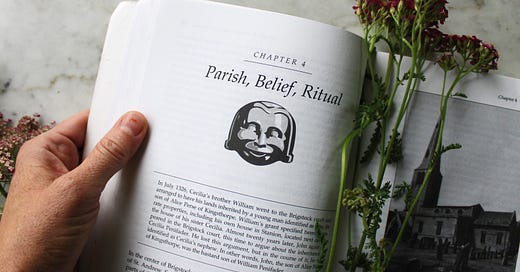



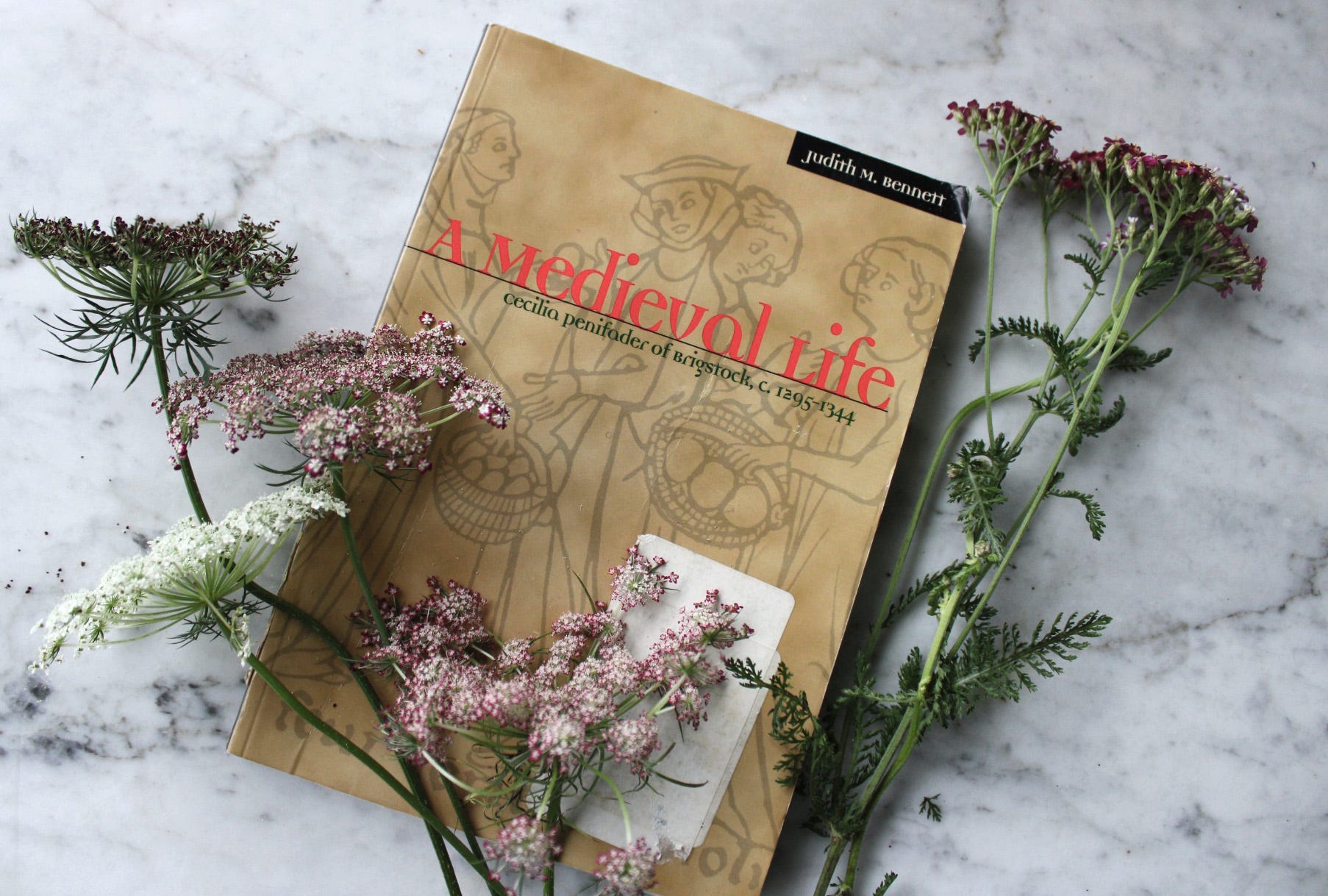
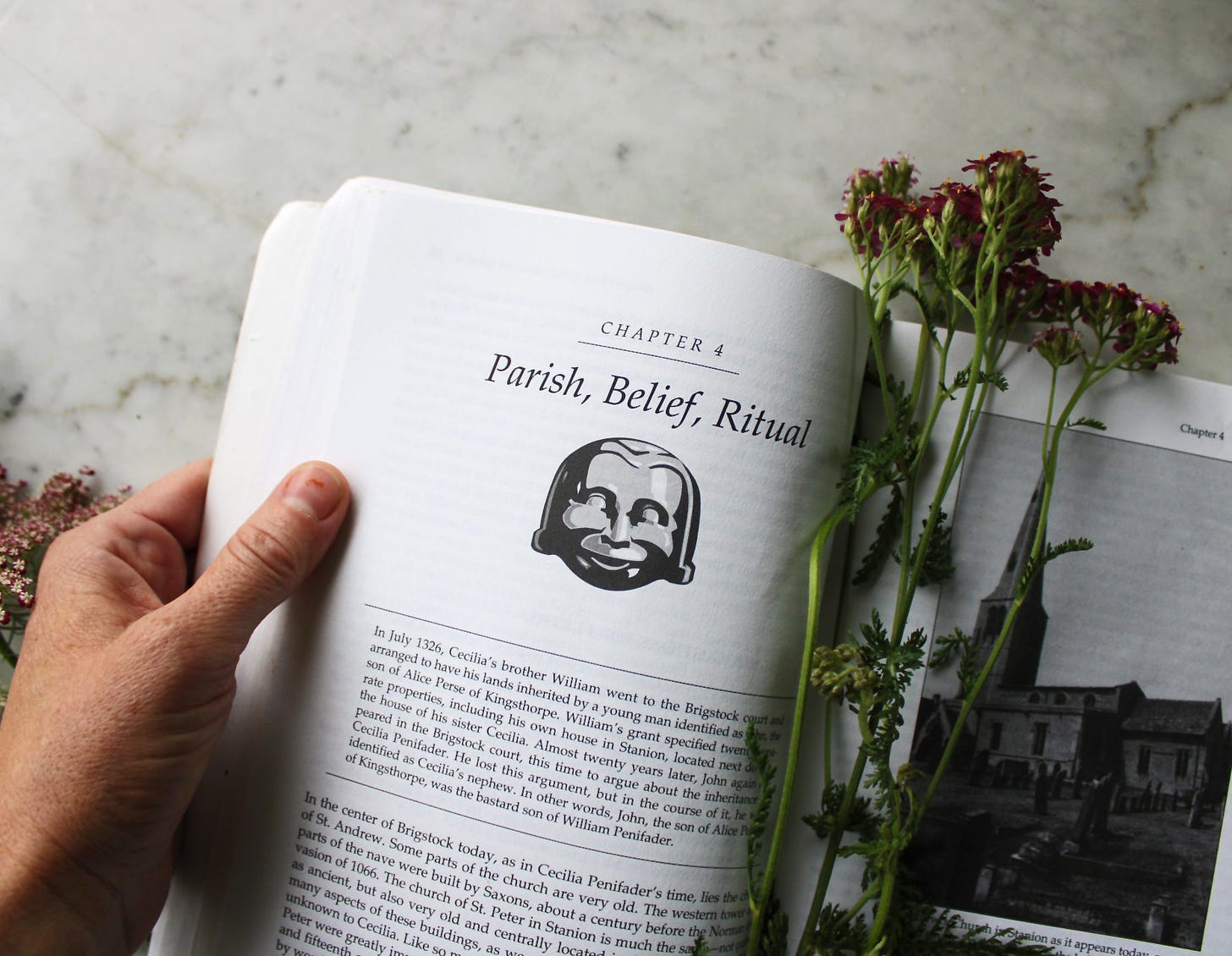
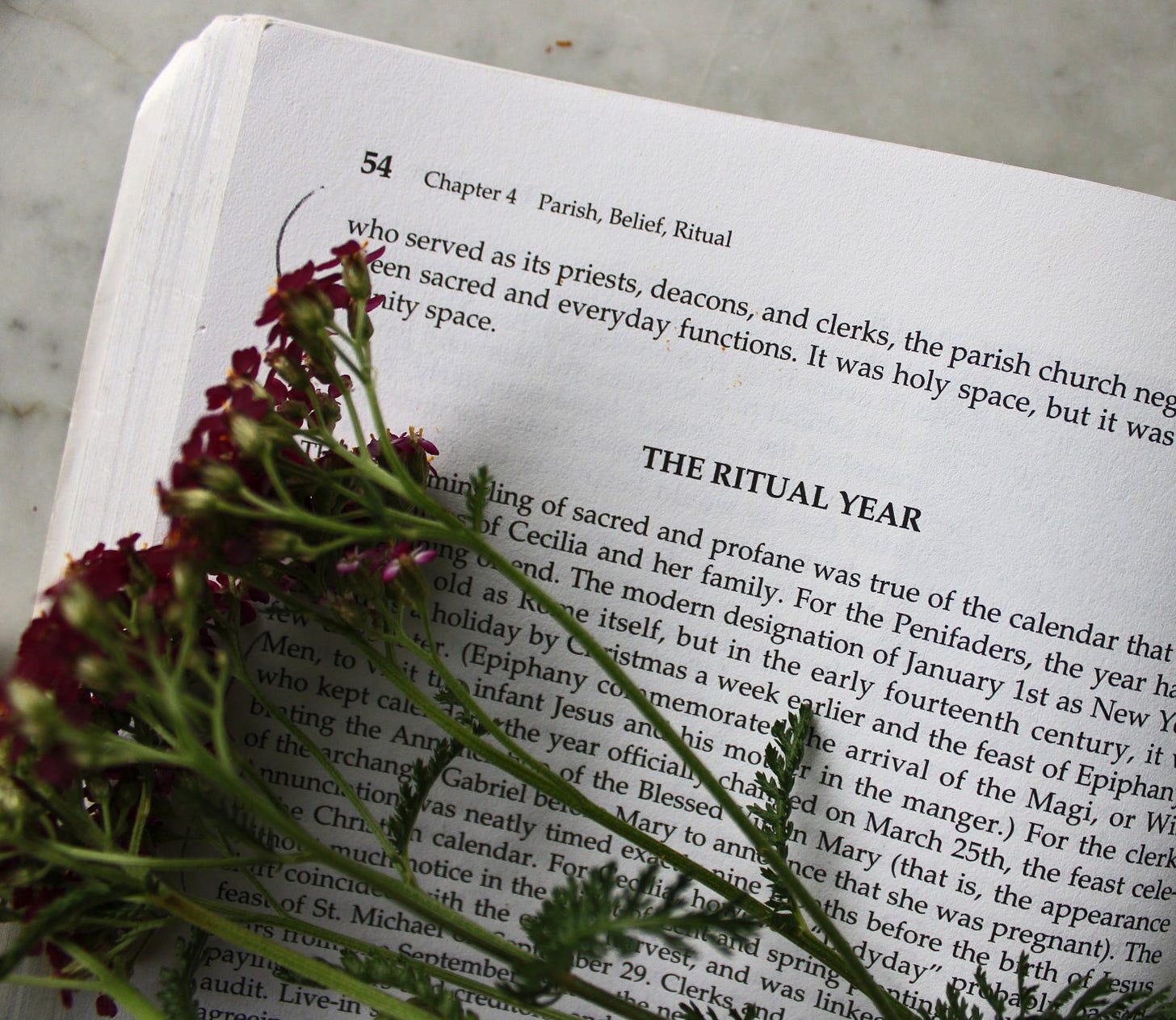
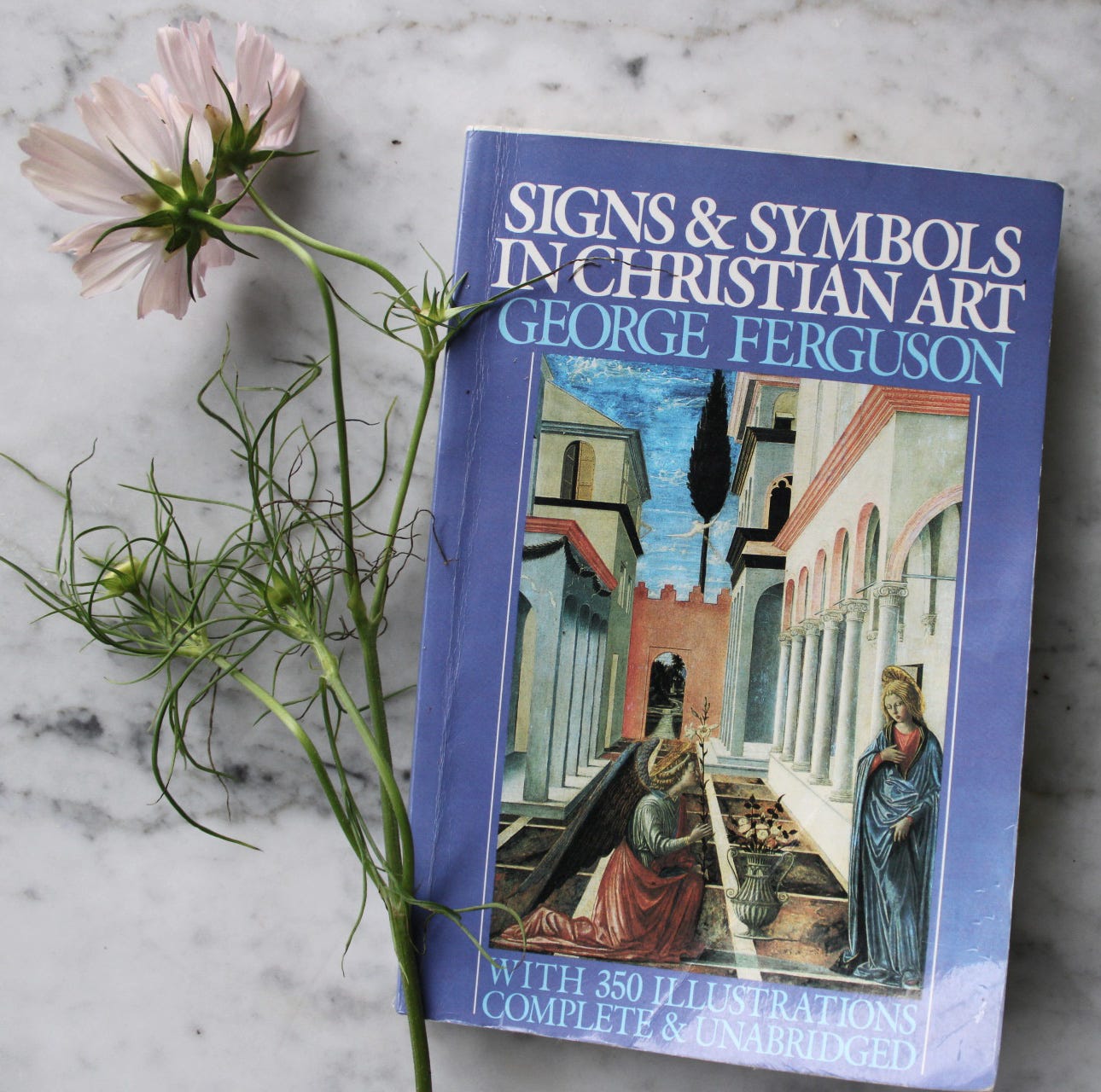
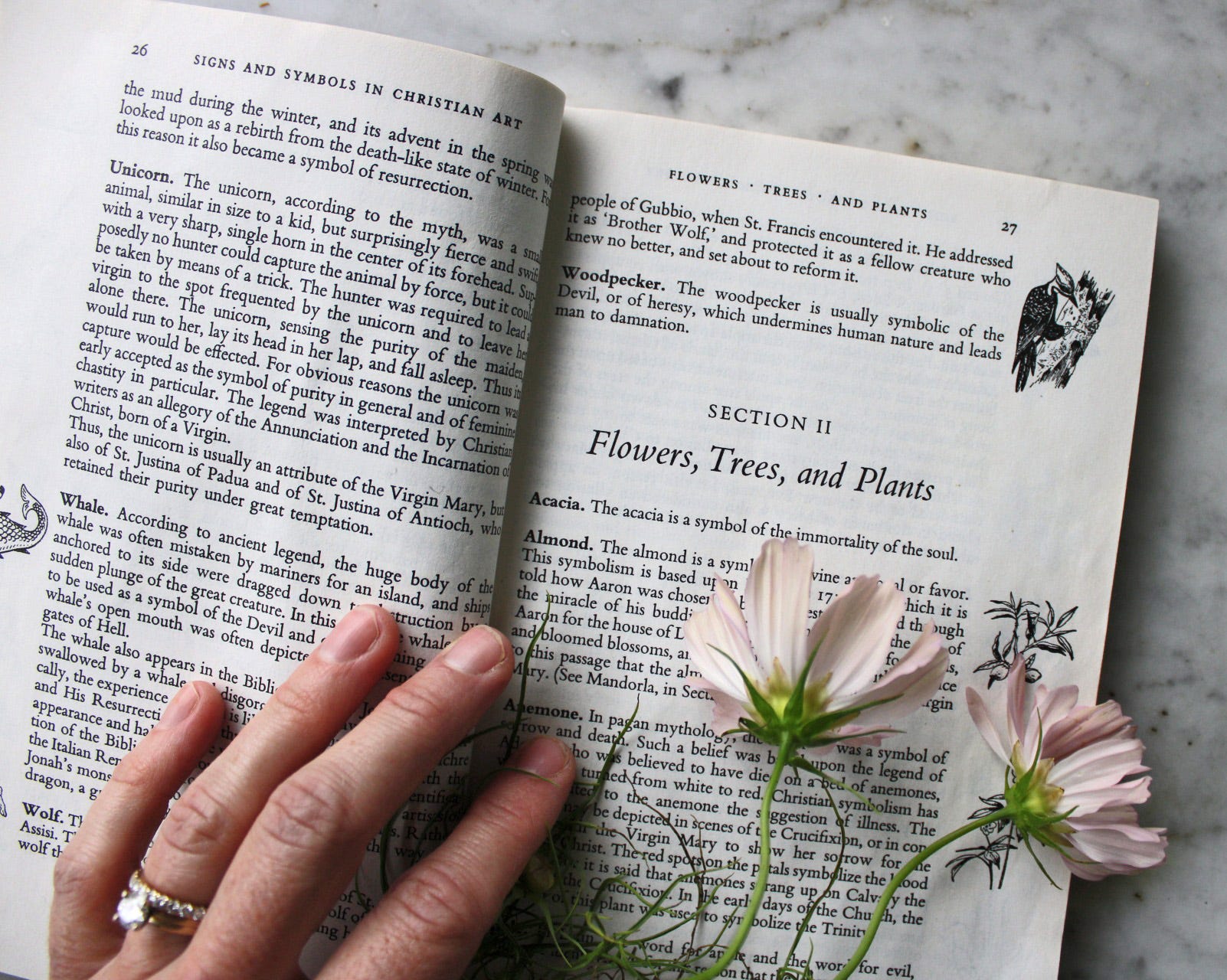
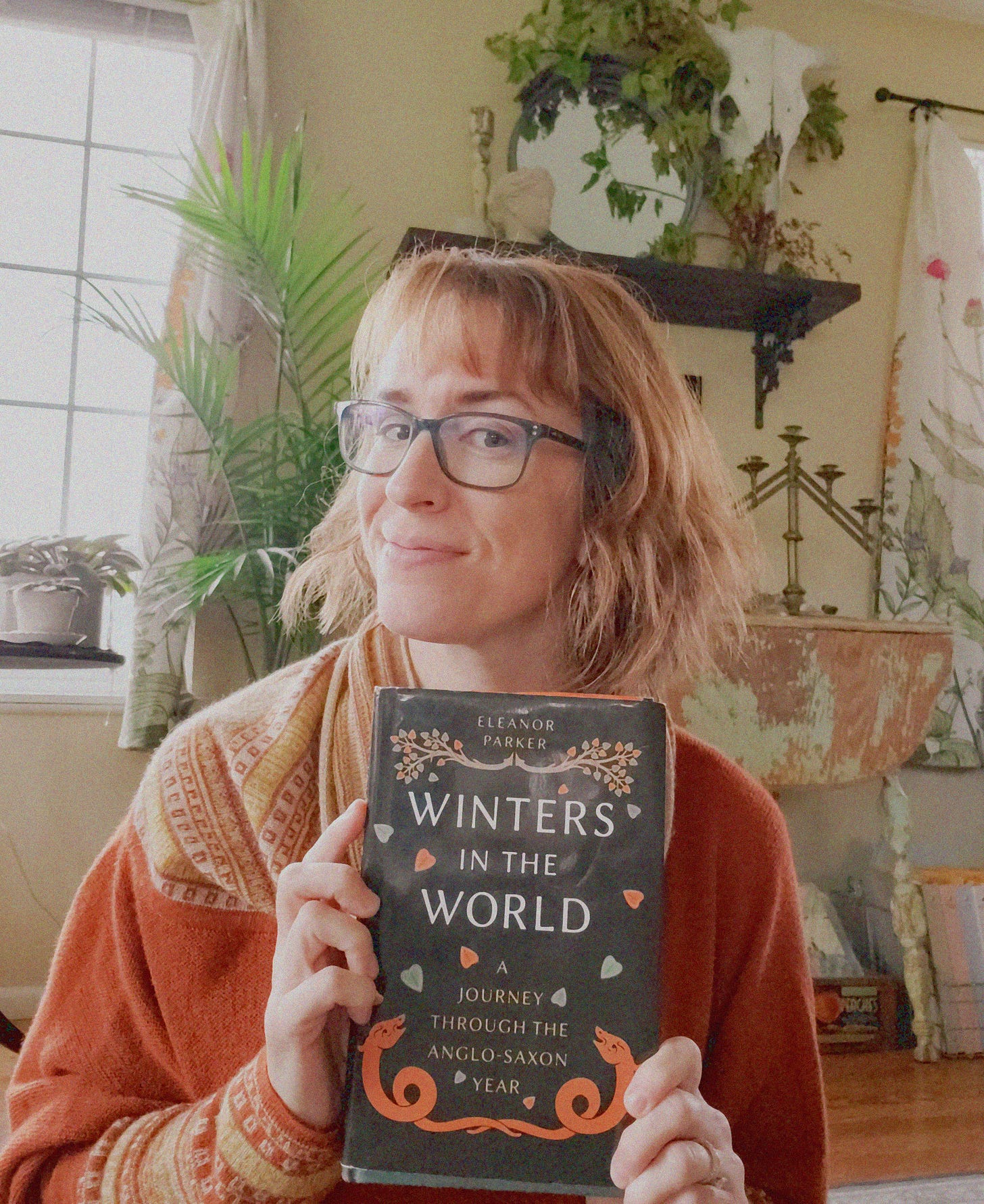
Love this! :) I'm looking forward to checking out both "A Medieval Life" and "Signs and Symbols" - both sound fantastic. In that vein, have you read K.C. Ireton's "The Circle of Seasons"? (She's also on Substack @kcireton!
Hoping to join the book club - I've been meaning to read "Winters in the World" and it's been sitting on my bookshelf for far too long, haha. :)
OH MAN count me in! This is arriving right when I need it. Thank you for sharing your journey! I need to pull a chair and tea up to your library and flip through your tomes.